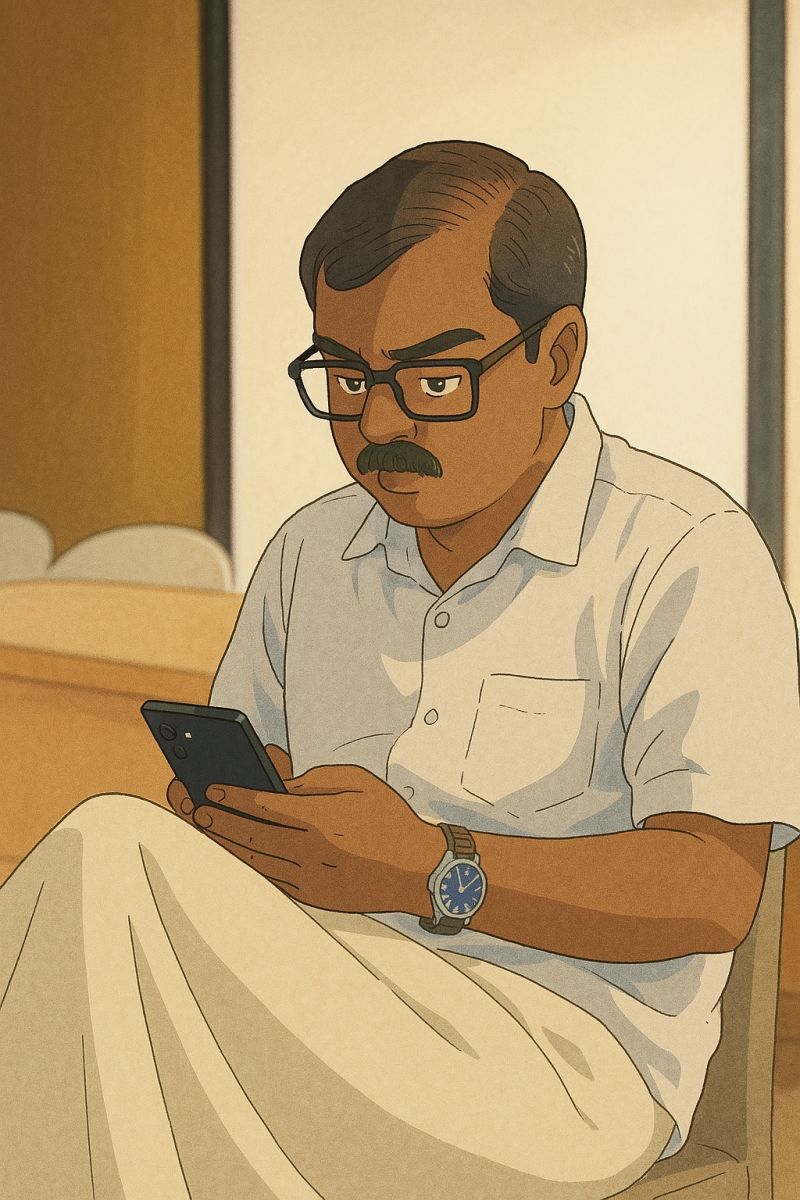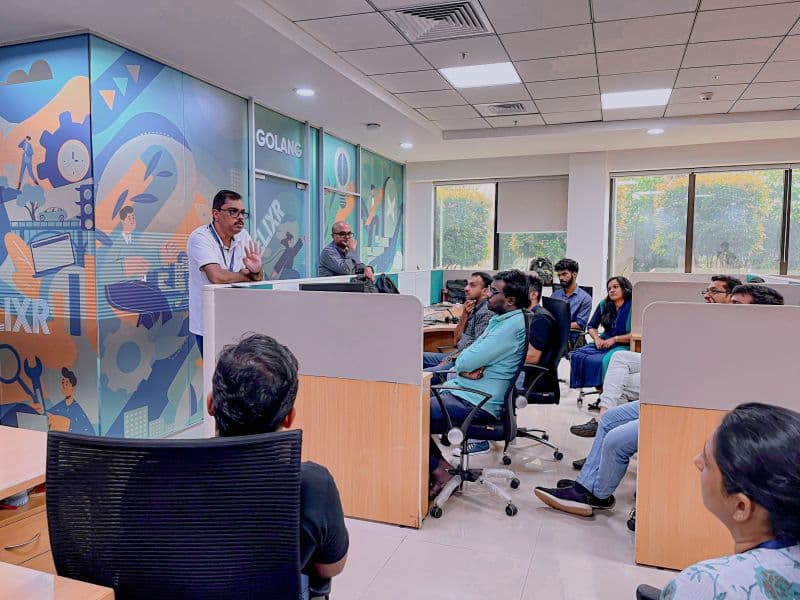
The healthcare industry is full of stress and pressure. Doctors and nurses work day and night, helping people get better. But doing this every day is tiring. Their bodies and minds feel heavy. This deep tiredness from caring too much is called burnout or compassion fatigue.
Even with all the stress in healthcare, something new and heartwarming is starting to grow. It’s a trend where people use drawings and simple stories to show the real, human side of healthcare. It’s not about new machines or fancy technology, it’s about using pictures and stories to show what life is really like for the people who care for others.
Look at the picture above. It shows a middle-aged man wearing a white shirt and mundu, looking closely at his phone. He might be a doctor reading patient updates, someone working at the hospital checking messages, or a family member waiting for news. The scene looks simple, but the drawing style, like in comics or anime, makes it feel special and full of emotion.
This type of storytelling through pictures is becoming popular, especially on apps like LinkedIn, Instagram, and Threads. It takes the serious and plain side of hospitals and shows it in a warmer, more friendly way, sometimes even reminding us of childhood.
Visual Storytelling in Digital Healthcare
Today, as more health content is shared online, people want things that feel real. They’re not interested in perfect pictures or boring business talk. They want true stories, real feelings, and pictures they can connect with. That’s why these animated healthcare drawings are becoming so popular.
These pictures don’t show big hospital events. They show small things, a quiet break or a thoughtful patient. These moments feel soft and human. For busy doctors and nurses, it’s a welcome break from stress.
Why This Trend Matters Now
After the pandemic, many saw how hard healthcare workers’ jobs really are. There’s now a bigger focus on mental health and patient care, and more people want to share stories that are warm, caring, and full of heart. But in most ads and pictures, they still look too serious and not very warm or emotional.
This new kind of healthcare art changes how we see things. It shows the human side of medicine without making it too dramatic or unreal. It creatively tells the truth. The drawings help doctors and nurses see themselves not just as workers, but as real people with feelings, challenges, and happy moments. It also helps both the artists and the people who look at the art feel something.
Bridging Wellness and Creativity
There’s a strong link between mental health in healthcare and being creative. This kind of content, using digital art, stories, and everyday hospital scenes, helps people feel better. It lets healthcare workers remember why they do their job and helps patients and families understand their experience with more care and kindness.
This kind of content is becoming popular in healthcare branding, too. Many hospitals, clinics, and health tech companies are using animated healthcare art to make their online image feel softer and more friendly. It helps people trust them more and feel more connected. This matches the new trend of using kind and honest stories in healthcare marketing.
Why Imagination Has a Place in Healthcare Stories
The man in the drawing might just look like someone seriously looking at his phone. But maybe he’s reading patient test results. Or maybe he’s checking his child’s exam timetable. Or he could be reading a cartoon, taking a short break from all the tough decisions he has to make.
And that’s what this trend is really about. Using childlike imagination in healthcare stories doesn’t make the work seem less important; it adds to it. It reminds us that healing isn’t just about medicine. It’s also about feelings, pictures, and the human experience.
In today’s busy healthcare world, things can often feel cold and serious. Drawings show that doctors and nurses are real people with emotions, not just workers. These pictures help them pause and remember their purpose. For patients and families, it brings comfort and shows that someone truly cares.
Now, more hospitals and health brands are using this style to connect better with people. Doctors can give medicine, but kind words and support matter too. When someone feels cared for, they heal faster. Being kind, listening, and staying close help just as much as any pill. Can pictures and stories help explain healthcare in a better way? Share your thoughts with us!

Are You Getting the Respect You Deserve as a Mentor?

Why Flip Through Paper When You Can Easily Scroll Through Digital Data

Celebrating Ustava 2024: A Joyous Onam Celebration at Elixr Labs
